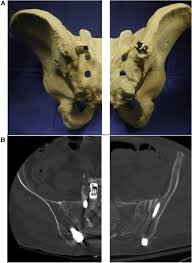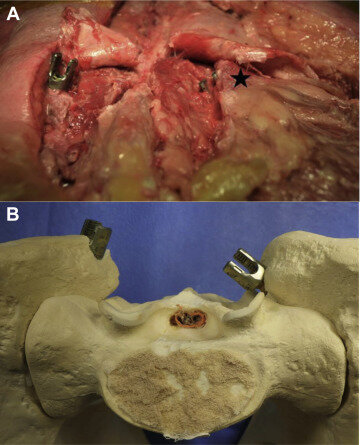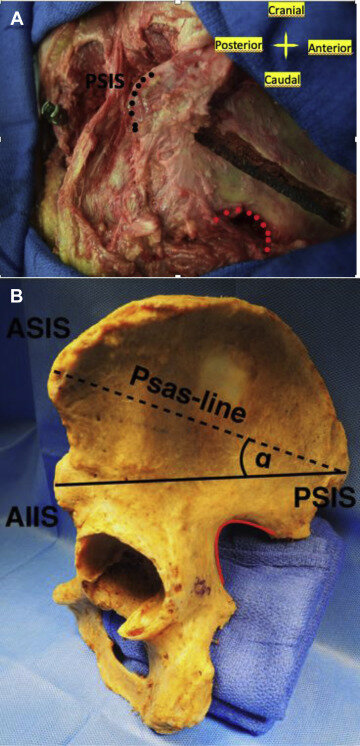The Modified Iliac Screw: An Anatomic Comparison and Technical Guide
World Neurosurg. 2020 Apr;136:e608-e613. doi: 10.1016/j.wneu.2020.01.091.Epub 2020 Jan 23.
Alexander von Glinski, Emre Yilmaz, Basem Ishak, Erik Hayman, Wyatt Ramey, Andrew Jack, Joe Iwanaga, Rod J Oskouian, R Shane Tubbs, Jens R Chapman
Abstract
Background: Iliac screws are a widely used sacropelvic fixation technique, which is often criticized for its impaired wound healing owing to hardware prominence. The aim of this study was to present a modified iliac screw (MIS) fixation technique that uses a different entry point more medially and caudally to the posterior superior iliac spine next to the rudimentary S1-S2 joint. Soft tissue coverage and midline distance in an MIS and a traditional iliac screw were compared.
Methods: Two different variations of iliac screws were placed into 12 fresh frozen adult cadavers (9 male, 3 female, mean age at death 77.08 years, mean body mass index 23.4). The distance between the midline and the center of the screw head was measured. We also compared the angulation of the trajectories. After wound closure, we measured the distance between the iliac screw head and the skin.
Results: The mean distance from the screw tulip head to the skin was 2.43 cm (range, 1.2-4.2 cm) with the traditional iliac screw and 3.16 cm (range, 1.7-4.3 cm) with the MIS. The mean distance to the midline with the MIS was 3.1 cm (range, 2.4-4.5 cm) lateral to the midline compared with the traditional iliac screw, of which the mean was 4.2 cm lateral to the midline (range, 3.7-4.9 cm). Mean angulation was 10°.
Conclusions: The MIS avoids the use of connectors and provides less prominent pelvic fixation. Clinically, this might help prevent prominent hardware and related wound healing impairment.
Keywords: Iliac screws; Lumbar pelvic fixation; Modified iliac screw; Screw prominence; Soft tissue coverage.
Copyright © 2020 Elsevier Inc. All rights reserved.





